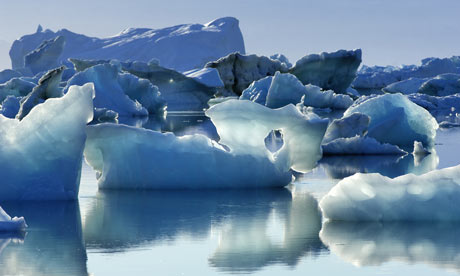The Sermilik fjord in Greenland: a chilling view of a warming world
‘We all live on the Greenland ice sheet now. Its fate is our fate’ 
By Patrick Barkham at Sermilik fjord, Greenland It is calving season in the Arctic. A flotilla of icebergs, some as jagged as fairytale castles and others as smooth as dinosaur eggs, calve from the ice sheet that smothers Greenland and sail down the fjords. The journey of these sculptures of ice from glaciers to ocean is eerily beautiful and utterly terrifying. The wall of ice that rises behind Sermilik fjord stretches for 1,500 miles (2,400km) from north to south and smothers 80% of this country. It has been frozen for 3m years. Now it is melting, far faster than the climate models predicted and far more decisively than any political action to combat our changing climate. If the Greenland ice sheet disappeared sea levels around the world would rise by seven metres, as 10% of the world’s fresh water is currently frozen here. This is also the season for science in Greenland. Glaciologists, seismologists and climatologists from around the world are landing on the ice sheet in helicopters, taking ice-breakers up its inaccessible coastline and measuring glaciers in a race against time to discover why the ice in Greenland is vanishing so much faster than expected. Gordon Hamilton, a Scottish-born glaciologist from the University of Maine’s Climate Change Institute, is packing up equipment at his base camp in Tasiilaq, a tiny, remote east coast settlement only accessible by helicopter and where huskies howl all night. … “When we arrived there was no glacier to be seen. It was way up the fjord,” he says. “We thought we’d made some stupid goof with the co-ordinates, but we were where we were supposed to be.” It was the glacier that was in the wrong place. A vast expanse had melted away. When Hamilton and Stearns processed their first measurements of the glacier’s speed, they thought they had made another mistake. They found it was marching forwards at a greater pace than a glacier had ever been observed to flow before. “We were blown away because we realised that the glaciers had accelerated not just by a little bit but by a lot,” he says. The three glaciers they studied had abruptly increased the speed by which they were transmitting ice from the ice sheet into the ocean. …
The Sermilik fjord in Greenland: a chilling view of a warming world